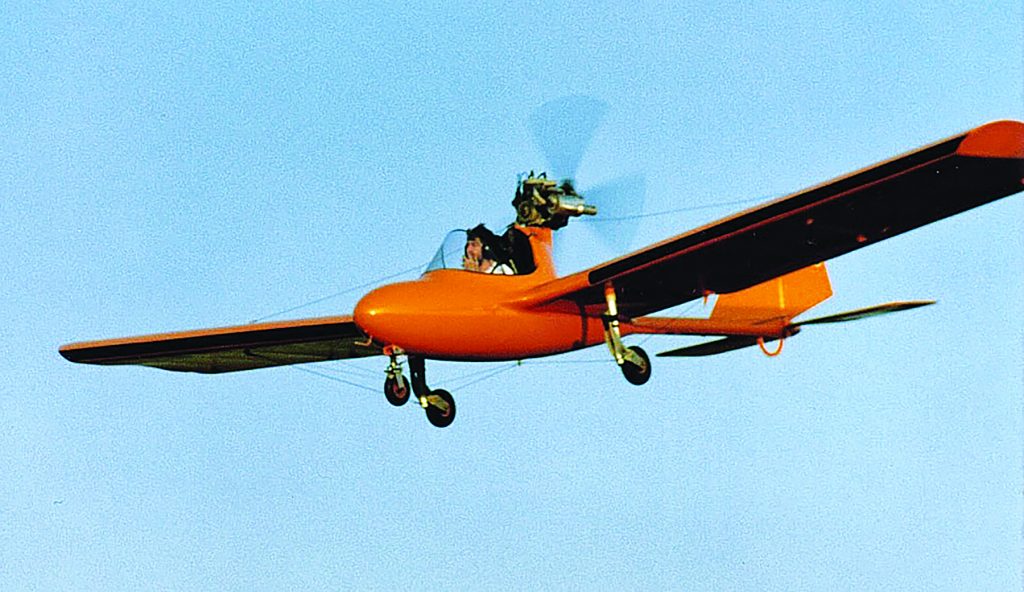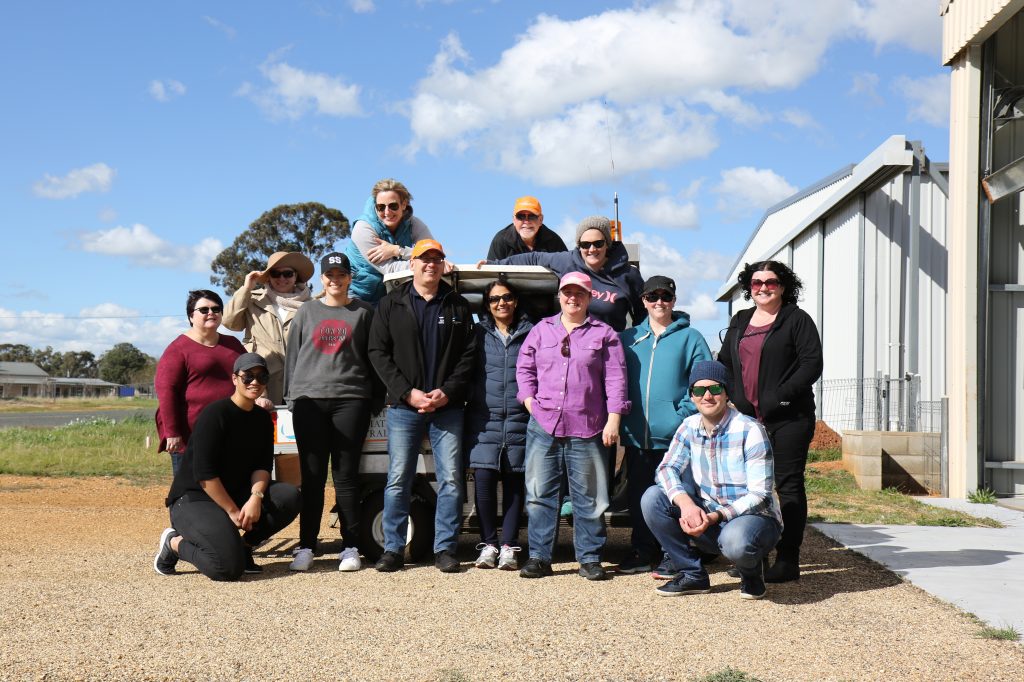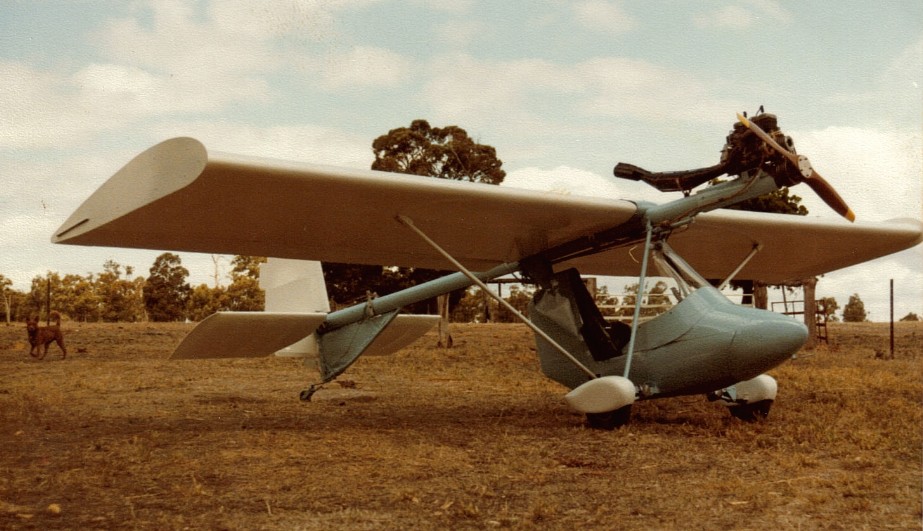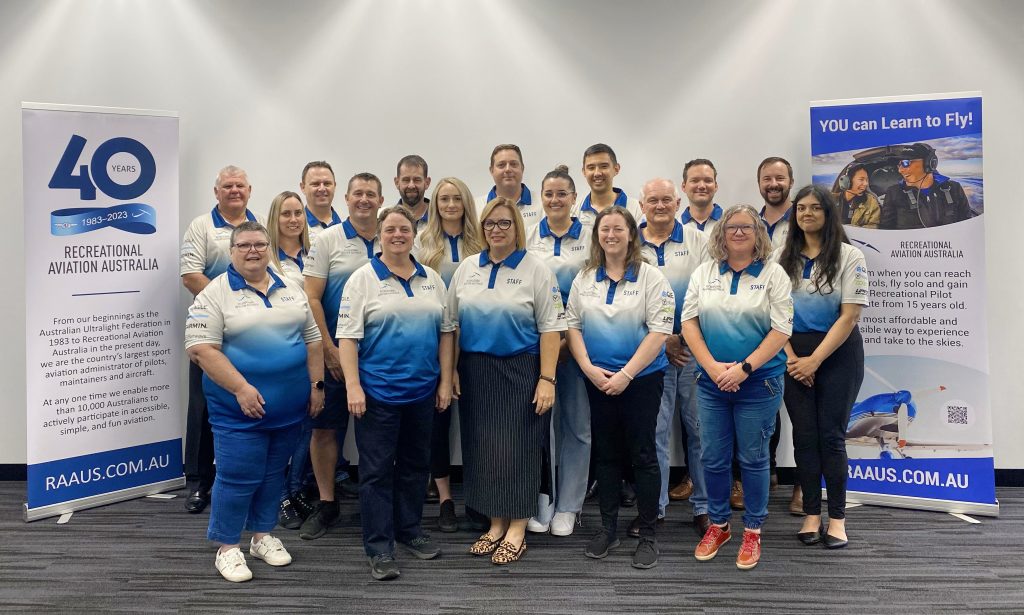A LOOK AT THE PAST, PRESENT AND FUTURE IN CELEBRATION OF RAAUS’ 40TH BIRTHDAY!
1983 was a hell of a year. Michael Jackson’s Thriller was topping the charts, millions tuned in for the final episode of M*A*S*H, kids flocked to arcades to play the newly-released Mario Bros. and – in the small town of Mangalore, Victoria – a fledgling organisation was born.
That organisation, the Australian Ultralight Federation, had a mission; to enable ordinary Australian citizens to chase the sky, learning to build and fly ultralight aircraft. Forty years and a new name later, Recreational Aviation Australia continues to fight for the rights of its members, and encourage the next generation of pilots to chase their dreams. In celebration of RAAus’ 40 years, let’s take a look back at how far we’ve come, and where we’re headed!
50s & 60s: The Birth of Ultralight Aviation
In the US during the 1950s, NASA began researching the recovery of space vehicles and was experimenting with Rogallo wing kites. These kite design ideas were picked up by the water-skiing fraternity and used by water skiers to become airborne behind their speed boats.
In 1968, Sydney engineer and water skier Bill Moyes discovered that he could actually control the towed kite using a triangular trapeze and shifting his weight. At the 1969 World Water-Skiing Championships in Copenhagen, Bill amazed the crowd when he detached himself from the tow line and proceeded to glide the kite to a smooth landing. The hang-glider was born, and from this point, lightweight aviation moved quickly.
70s: Refining the Craft
Enthusiasts for the new sport appeared everywhere and clubs formed around suitable open sites. “The Quarry” in outer western Sydney was one such site, where in 1974 Ron Wheeler, a semi-retired boat builder, took his prototype “Scout” to The Quarry and flew it for the first time.
The Wheeler Scout was a three-axis conventional layout machine, built out of marine aluminium tube and yacht fittings with Dacron skin coverings. The engine was a “souped up” Victa mower engine – go-cart technology. Ron’s Scout was a real success story and Ron became an advocate for official recognition of microlight aircraft.


People having fun in aeroplanes without “Big Brother’s imprimatur” was of course noted! In 1976 Air Navigation Order (ANO) 95.10 was promulgated and was a world first. It legitimised the operation of single seat aircraft weighing less than 300kg. The restrictions were onerous; participants could not operate above 300 feet and were not allowed to cross roads or fly over people, but the operation was legal. There were no training requirements! You built your aircraft, took it to an open paddock, and then you tried to fly it!
ANO 95.10 was a green light for Ron to put the Scout into production. His kits were widely advertised in popular magazines for a price of around $250. There were a lot of buyers, and the ultralight story was well and truly on its way.
The advent of ANO 95.10, even with its severe limitations, was an absolute godsend for the ultralight
movement. People who had dreams of building aeroplanes now embraced the ultralight. New materials were adopted and amazing machines were designed and flown.
80s: Enter The AUF
With the success of machines like the Scout, more ultralight clubs were appearing along with new aircraft designs, little operational control and still no formalised training. In the early eighties it became evident to the authority of the day that these “minimum” aircraft were here to stay and something needed to be done to formalise the movement. The search began for an organisation who could become the “peak body” and spokesperson for the scattered clubs.
In June 1983 at the SAAA Convention in Mangalore, Victoria, the Australian Ultralight Federation (AUF) came into being, with David Betteridge named as inaugural president.
The original concept was to have a simple overarching organisation presiding over ultralight clubs. After 12 months however, some 700 individual members had joined the Federation. It became apparent that the majority of pilots were not interested in the “club” scheme but preferred to belong to one national body. By 1985 our membership was growing rapidly. Unfortunately, the accident rate was also climbing and the press and the Authority were taking notice.
ANO 95.10 was a world first and a piece of enlightened legislation. It was also the key to Pandora’s Box! Many of the enthusiast participants had very little knowledge of flying per se, nor of the inherent pitfalls for the unwary. Many had the Australian dislike for authority or rules!
While it is easy to be critical of a rapidly climbing accident rate, many of the pilots were trying to teach themselves to fly. We also need to look at the regulatory regime of the time. The maximum weight limit plus the wing loading limitations meant very flimsy machines with an extremely limited performance envelope. Engines were mainly 2 stroke, often unreliable and borrowed from stationary engines, mowers and snowmobiles. The 300 feet ceiling limit forced the pilots to operate in a regime where any stall situation which developed into a wing-drop was going to be an accident!
In the mid-80s, the House of Representatives launched a review into Sports Aviation. Their recommendations would have a major impact on the Sports Aviation scene for many years to come. In 1985 the Authority promulgated an interim ANO 95.25 pending the final outcome of the review. This Order opened the door to factory-built, two-seat aircraft and the use of these aircraft for flying training.
Once again this was a world first, and gave Australian builders a chance to be at the forefront of the ultralight movement worldwide! The two-seat Thruster Gemini was approved to be used for flight training and went on to become the mainstay of training in the Southern states. In Northern NSW, Howard Hughes built his prototype 2-stroke Lightwing which had been designed by Aeronautical Engineer Bill Whitney and developed using the ANO 101.28 amateur built system. This aircraft slotted right into the new 95.25 scheme. Howie always liked to claim that he “built the first ultralight aircraft that you sat in, all the others you only rode on top!”
90s: Formalising the Sport
Suddenly, not only did the AUF have members and single seat aircraft to worry about, but now there were flying schools, training and the provision of an Operations Manual to meet the requirements for Authority approval. Requirements for training also had to be sold to the members and policed! It is not surprising that the organisation started to struggle.
Part of the problem was that the AUF organisation had grown so fast, and by the early 90s these matters were coming to a head. The Authority was pushing for up-to-date Operations and Technical Manuals, and were wanting to phase out ANO 95.25 and replace it with ANO 101.55. This would introduce new standards for the factories and meant much greater CAA Airworthiness input from the Authority into the building and testing of these aircraft.
This was a whole new ball game. We became an Association Incorporated in the ACT and John McCarron became our first president. The AUF entered a brand-new exciting phase and once again our membership was on the rise. Flying school inspections and check rides with CFIs became an annual event. Standardisation across the schools worked and the fatality accident rate, which had been going down since the inception of flying training, continued to improve. In 1985 and 1986 the accident rate included 1 death per 100 members. By 1990 we had reduced the numbers to 1 death per 500 members. By 93/94 we were trending 1 in a 1000 and by 95 it was 1 in 1800.



Early 2000s: Insurance and The Search for a New Name
In the late 90s a Tiger Moth crashed in South Australia and caused fire that led to major damage of property and infrastructure. The pilot/owner was sued for damages. This was a wakeup call for the AUF, introducing a scheme where every member paid a $30 surcharge which went to third-party insurance. All good, but further down the track the London underwriters started to get nervous about insuring ultralights! At this time our accident rate was quite respectable and close to mirroring GA. However, particularly to the press, ultralight was a very dirty word.
As time moved on, our broker simply couldn’t find an underwriter who would insure ultralights. It became obvious that we had to try and break away from the old ultralight tag. At this stage aeroplanes like Jabirus and Lightwings using 4-stroke engines were becoming the norm. We ran a competition in the magazine for a new name and came up with Recreational Aviation Australia (RAA). We were pleased, and set about registering the name. However, the Royal Automobile Association of SA were very unhappy and said so very loudly! Eventually, we came up with RAAus – our brand-new moniker. We finally registered our new name with ASIC and we formally became Recreational Aviation Australia Inc.
The early 2000s were also a time where terrorist activity was at the forefront of all governments and their agencies’ thoughts and actions. Part of the flow-down effect from the 9/11 attacks was that CASA decreed the issue of GA Student Pilot Licences would be put on a six month hold while the applicant was scrutinised in minute detail. However, the Authority also decided that RAAus student pilots would not be affected.



Obviously, here was an opportunity for an enterprising organisation! We set about selling the idea to GA flying schools, pointing out that we could issue Student Certificates in 24 hours. They could train on RAAus aircraft up to a pilot certificate, by then the GA Student Licence would be issued and would be a simple conversion over to a GA ticket. It worked and our membership blossomed.
It seemed like a great idea at the time, but in hindsight it spelt the demise of the old AUF philosophy and the motto Maximum Fun, Minimum Cost, Minimum Rules. Instead of being all about the members, there was a drift toward being a self-administered, GA organisation. The new membership just wanted to get their qualifications and move on. Flying just for the fun of being airborne was fading away!
2010s: The Years Roll On
By 2016 we had a new company structure, a new Board of Management and a (slighty) new name; Recreational Aviation Australia Limited. Some old hands, such as Rod Birrell and Eugene Reid, were still present, however it was mainly new faces headed up by Michael Monck. There was a new Technical Manual that no longer used some of our old exemptions but heralded the introduction of some CASA requirements to our aeroplanes.
We now have a large selection of very desirable machines coming into the country via the Light Sport Aircraft category. While some are exotic, these aircraft are not low cost! Jabiru, who has built more aeroplanes than any other Australian manufacturer ever, soldiered on building great aircraft, its engine building section going from strength to strength with engine production numbers.

The old days of AUF/RAAus butting heads with CASA appear to be long gone. These days our organisation works closely with CASA to the point where we are virtually a delegate administering the lightweight end of General Aviation.
2020s: New Horizons
40 years on and RAAus is continuing to fight for its members, and adapt to changes in the recreational aviation world. Members are waiting with bated breath for the formalisation of the 760kg MTOW increase, set to open up the membership to a wide range of new flying opportunities, and bring new pilots coming from GA into the fold. On the heels of this could come even more expanded freedoms for RAAus members, such as access to controlled airspace.
Of course, there’s no telling what the future holds, but all trends point in the direction of electric aircraft. The demand for electric-powered aviation is booming, and Australian builders are at the forefront of this revolutionary era in aviation history. Could we see widescale adoption of electric aircraft in both flight schools and private ownership? Time will tell.
No matter what happens, you can be sure RAAus will be here to deliver our mission; to be a respected organisation that continues to advance safe aviation and encourage training across our industry. We do this by creating opportunities for a wide range of aviation activities, through industry leadership, fostering a diverse community and innovating across light aviation.
40 years, more than 10,000 members, a fleet of 3,200 aircraft and 174 flying schools. It’s safe to say our organisation has been a roaring success!









